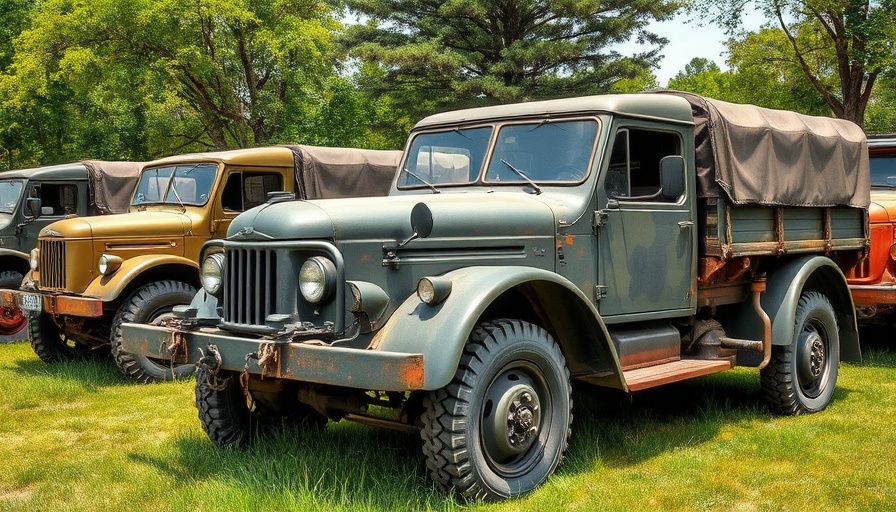
A Turquoise Truck in Modern Warfare
The ongoing conflict between Russia and Ukraine continues to reveal unusual tactics and strategies employed on the front lines. One recent event involved a Russian assault that utilized a distinctive light truck, the LuAZ-1302, known for its bright turquoise color. This vintage vehicle, produced in Ukraine between 1966 and 1992, exemplifies the desperate measures Russia is taking as its military equipment supply dwindles. With over 20,000 armored vehicles lost, Russian regiments are increasingly relying on civilian vehicles to transport troops into battle.
Vintage Vehicles on the Battlefield
Historically, vehicles like the LuAZ-1302 were not designed for combat scenarios; they lacked adequate armor and protective features. This makes the choice of using such a truck in a military setting even more peculiar. The LuAZ-1302 stands out not just for its design but also symbolizes the decline in Russia's military capabilities.
The Role of Technology in Contemporary Conflicts
The use of outdated vehicles highlights a critical challenge for military strategy today—the integration of technology in warfare. While drones and artillery have significantly changed how battles are fought, the presence of vulnerable vehicles demonstrates a growing reliance on unconventional tactics as supplies run low. This reflects a broader trend where technology not only aids combat but also shapes decisions based on available resources.
Lessons from the Front Lines
As the LuAZ-1302 was rendered immobile following an assault involving Ukrainian drones, it serves as a stark reminder of the unpredictability of modern warfare. The choice of an eye-catching turquoise vehicle amid a tactical offensive underscores the gap between the military’s ambitions and its operational realities. For military strategists and defense analysts, each incident is a lesson in adapting to ongoing changes in warfare, urging continuous innovations in both offensive and defensive tactics.
 Add Row
Add Row  Add
Add 




Write A Comment